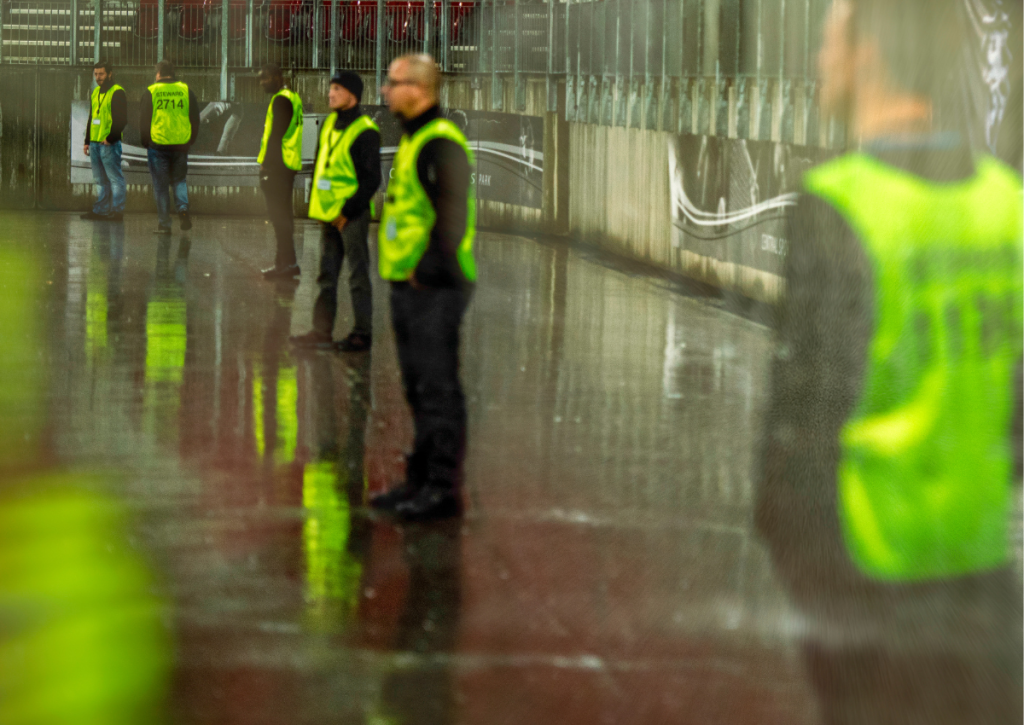Event Trends Taking 2023 By Storm
5 event trends we’ll see more of by the end of 2023:

In-person events are back in business
Since the start of the pandemic, many of us have been eager to return to a sense of ‘norm’ both within our personal and professional lives. While 2022 saw an increase in in-person events, 2023 is set to exceed these numbers with the 2023 AMEX Global Event Trends Forecast highlighting “booming optimism and focus on in-person meetings and events”.
The desire for in-person events has increased in comparison to pre-pandemic times. After being deprived of live networking, learning and experiences for the past few years, the majority of individuals are yearning to ‘get back out there’.

Technology at the forefront
It should come as no surprise with modern advancements in technology that the adoption of event technology will be at the forefront of most events moving forward. From the introduction of e-tickets all the way to VR concerts from the comfort of your own living room, technology is changing the way the events industry operates. Let’s take a look at just a few of the areas in which technology is dominating the event industry:
Management tools
As briefly mentioned above, the introduction of e-tickets and online registration has allowed for the enhanced access and simplified process of discovering and registering for events worldwide. Additionally, other management tools such as contact management and event reporting have vastly streamlined the way we uncover important information.
Marketing tools
Reach the masses and advertise your event to the right audience with marketing tools such as website builders, email marketing and promo codes. Using these tools can be imperative in increasing customer conversions and audience retention. They also allow for individuals to get a preview of your upcoming event or previous events held. This on its own can be a big motivator in ticket sales.
Engagement tools
Engagement is key in running a successful event. Without an engaged audience you run the risk of hosting an unsuccessful event. Through mobile apps, in-session polls, and Q&As, just to name a few, you can create a fun and interactive atmosphere while expanding your organisations growth and awareness.
Remember to invest in event equipment insurance when exploring and integrating more technology into your next event.

Sustainability is key
Over the past few years, sustainability has become a prominent topic in the news. In particular, focusing on the rise of climate change and increased severity of natural disasters. With public figures such as David Attenborough and Greta Thunberg calling out for change, many people are taking substantial steps to decrease their footprint.
This has been the same in the events industry with many organisers making positive changes. Some changes include using paper straws, getting rid of one-time use materials, and encouraging attendees to use eco-friendly transportation.
A recent poll found that 80% of meeting and events professionals said that their organisations take sustainability into account when planning events. Additionally, 76% stated their organisation have defined a sustainable events strategy.

Security enhancements
Event security requirements are becoming a lot stricter in late March of 2023 with the introduction of Protect Duty. The new legislation, otherwise known as Martyn’s Law, is set to increase the demand of security preparation for event organisers and businesses hosting events either at or adjacent to publicly accessible locations.
Event attendance size and expected improvements:
- 100 people or more = standard improvements of security.
- 800 people or more = significant improvements of security.
Protect Duty aims to reduce terrorism through the increase of responsibility and awareness of duty holders.

Boredom is not an option
No matter the event, whether it’s a festival, concert, convention, conference, or sporting event, to make a lasting impact you must ensure your attendees are entertained throughout. If attendees are left bored, they are less likely to return to or recommend other events held by the organisers. Or worse, they may leave negative feedback about their experience influencing potential future attendees.
So, how can you ensure your attendees are immersed?
Experience-first events
Experience-first events have soared in popularity and success since the pandemic. Event goers are intrigued in interesting and tangible events that allow for creativity and engagement.
Take the popularity of the Van Gogh Immersive Experience, for example. After wandering through the art exhibition and history of Van Gogh, you find yourself in a large room full of atmospheric music and projections bringing the paintings to life, finishing off the experience in a sunflower infinity room.
What did this event do right?
- The exhibition utilised the space effectively, not leaving any dead spaces in the area. By doing this the event felt ‘jam-packed’ with culture and art.
- Photo opportunities were created throughout the area acting as a powerful marketing tool for organic promotion.
- Cleverly, the event avoided extra costs as and where it could. For instance, the sunflower room used mirrors on the walls and ceiling to give the illusion the flowers went on as far as the eye could see.
- The event was suitable for all ages, with something for everyone to enjoy.
4 things to remember when planning an experience-first event:
- Designing interactive experiences can create opportunities for organic growth and promotion.
- The experience/s should be accessible to all.
- Utilising the fear of missing out (FOMO) can draw the crowds to your event.
- You don’t have to spend an arm and a leg to create impactful experiences.
Do you need event insurance?
Now you are up to date with the latest event trends, trust our experts to competitively insure your event.




